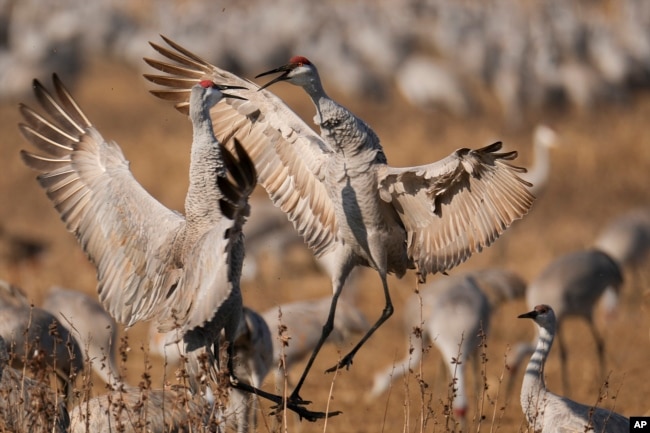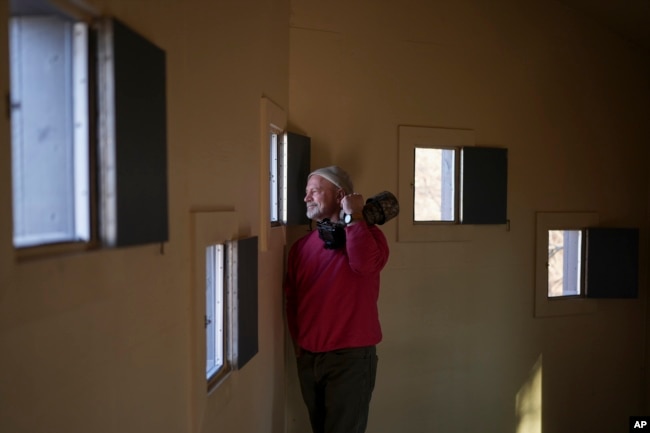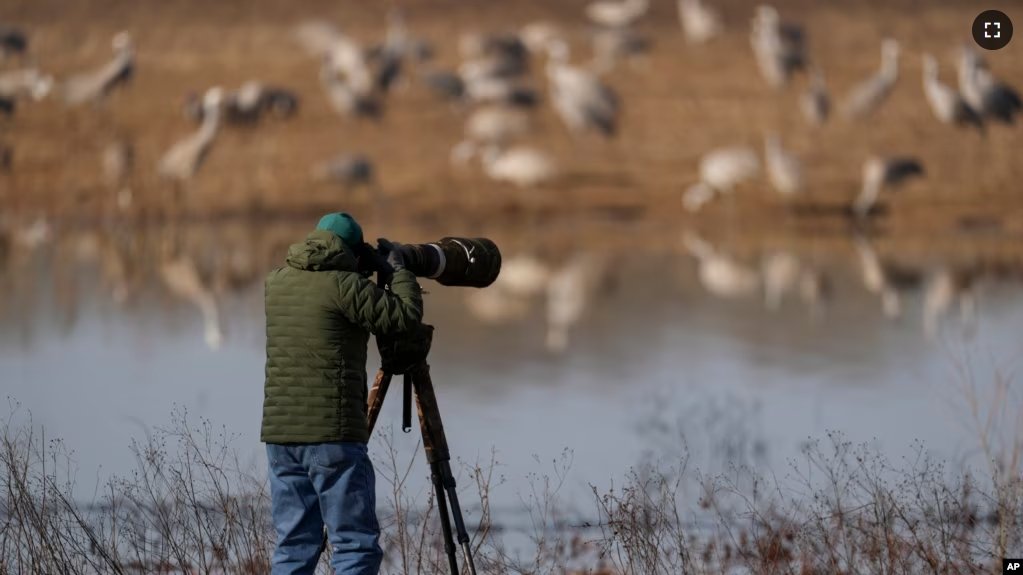In flooded agricultural fields near the Tennessee River, tens of thousands of birds called sandhill cranes search for food such as berries, corn, seeds and insects.
The cranes come to the Wheeler National Wildlife Refuge Center in northern Alabama during the winter. The yearly movement, or migration, of sandhill cranes brings many birdwatchers who want to see the tall birds up close.
The birdwatchers also come to see the rare and endangered whooping cranes that migrate in much smaller numbers to Wheeler. Many other birds can be seen, including geese, ducks, bald eagles, kestrels and hawks.
Park ranger David Young described the area as “a birder’s paradise,” meaning it is a perfect place for birdwatchers.
The cranes fly from the Great Lakes, an area far to the north, to Alabama each year.
The sandhill cranes started migrating to Wheeler for the winter in the mid-1990s. Their numbers increased by a lot in the mid-2000s, Young said. Last year, the migratory sandhill population reached a new record of 30,000 cranes.

The refuge has become a popular place for birdwatchers who bring hand-held telescopes called binoculars. Birdwatchers can even get closer to the 1.2-meter-tall cranes as visitors stay hidden behind photography blinds and a two-level observation center. A yearly Festival of the Cranes in January brings more attention and visitors.
The cranes put on a fun show, dancing on their thin legs, moving their wings and putting their long beaks in the air to make different sounds.
Diana Maybury-Sharp regularly comes to Wheeler with friends to hike and look at birds.
“It’s pretty extraordinary. I’ve seen them in other parts of the country where there were just a few,” Maybury-Sharp said. “They’re not vocal like they are here. There’s so many here that it’s an unusual experience.”
The whooping cranes are part of the eastern migratory population that comes from the north-central state of Wisconsin. Young said they started coming to Alabama in 2004. Their population is between 12 and 20 each winter.
Whooping cranes nearly died out in the early 1900s because of hunting and farming. The International Crane Foundation says recovery and reintroduction efforts have slowly increased their wild and captive populations to more than 800.

The whooping cranes are sometimes hard to see among the sandhills, but their height and white feathers help them stand out. Young said the migration patterns of the cranes might change depending on the climate of both their nesting places to the north and their winter homes in the south.
Rob Broeren brought along his camera and a long telephoto lens and found a good place to work on his wildlife photography skills. He comes to the refuge about twice a month each year to photograph the birds and ducks.
“You just need to be patient and wait for them to do something interesting and make their calls,” Broeren said. “You get that cool shot and that’s a good day.”
The sandhill cranes will start leaving the refuge in mid-February. Young said he notices a lot more activity when the birds are showing they are ready to travel back to their nesting grounds.
“It’s usually on a day when we have some sort of a south wind,” Young said. “They’re smart and they will ride the wind back to their breeding grounds whenever it’s most convenient for them.”
I’m John Russell.
Kristin M. Hall reported on this story for the Associated Press. John Russell adapted it for VOA Learning English.
_______________________________________________________
Words in This Story
blind –n. something to block sight or keep out light
hike –v. to walk through nature on trails for a fair distance
extraordinary – adj. going beyond what is normal or regular
vocal – adj. of or relating to the voice
nest – v. to occupy or build a nest – a place where a bird lays its eggs
convenient – adj. suited to easy performance; suited to a situation
